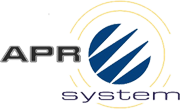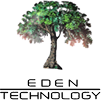BPC GROUP POLAND cooperates with IT suppliers, which has an experience in implementation projects realization. Current partner’s group counts several hundreds of IT suppliers and producers. Included both – international Corps and small IT companies. The most noteworthy are the authorial solution producers. The functionality and technology of these systems can often compete with expensive and popular IT solutions. Their creators are usually high-end programmers with lack of financial resources and marketing competences which indisposes them to compete with market key players.
UPCOMING PRESENTATION MEETINGS:
VIEW FULL SCHEDULEWebinarium – CRM w ERP: Kompleksowe zarządzanie relacją z klientem od namiaru do realizacji.
Webinarium – Automatyzacja i optymalizacja procesu kompletacji wspierane systemem WMS.
Roadshow online – Zwiększamy wydajność produkcji.
UPCOMING TRAINING COMPETENCE:
VIEW FULL SCHEDULECERTYFIKOWANE SZKOLENIE ON-LINE: Jak zorganizować proces wyboru i wdrożenia systemu wspierającego zarządzanie przedsiębiorstwem?
Szkolenie onlineCLASSES OF IT SYSTEMS:
-
ADC – Automatic Data Capture
The system allows automatic identification and data gathering. It refers to the methods of automatically identifying objects, collecting data about them, and entering that data directly into computer systems (i.e. without human involvement).
-
APS – Advanced Planning System
It allows to do advanced planning and simulating operations with the optimalization.The mathematical optimalization models are the base of APS systems.
-
BI – Business Intelligence
The system allows an interactive access critical information for enterprise, it allows multidimensional analysis of them. BI is the tool for managers and specialists which do analysis and strategy. Display(prezentacyjne) technics are get to user needs. The goal of BI is to allow for the easy interpretation of large volumes of data. Identifying new opportunities and implementing an effective strategy based on insights can provide businesses with a competitive market advantage and long-term stability.
-
BPM – Business Process Management
BPM allows to define and manage the exchange of information within the enterprise. BPM enables organizations to be more efficient, more effective and more capable of change than a functionally focused, traditional hierarchical management approach.
-
CMMS – Computerised Maintenance Management Systems
CMMS class system is computer software that helps maintenance teams keep a record of all assets they are responsible for, schedule and track maintenance tasks and keep a historical record of work they perform. The system allows more effective equipment and material resources management and it also keeps their maintanace.
-
CMS – Content Management System
It's an internet application or suite which allows to easy WWW service creation and editorial expansion by non-technical staff. Shaping the content and presentation of the website managed by CMS is via easy-to-use user interface, usually in the form of web pages containing complex forms and modules.
-
CRM – Customer Relationship Management
It allows to manage direct interaction with enterprise customers. Technologies and integration level used in CRM systems allows gathering and using the information about customers, inside the whole enterprise, according to that, the customer relationships can by stronger and more efficient.
-
DMS – Document Management System
This solution allows to process all forms of documents in the enterprise. The process is about the internal and external documents. This system is used to track, manage and store documents.
-
DWH – Data Warehouse
DWH is a system used for reporting and data analysis. DWHs are central repositories of integrated data from one or more disparate sources. They store current and historical data and are used for creating analytical reports for knowledge workers throughout the enterprise. Examples of reports could range from annual and quarterly comparisons and trends to detailed daily sales analyses.
-
EAM – Enterprise Assets Management
EAM systems allows the planning, maintenance control and monitoring of assets and tasks related to maintenance facilities, equipment, etc. is the optimal lifecycle management of the physical assets of an organization. It covers subjects including the design, construction, commissioning, operations, maintenance and decommissioning/replacement of plant, equipment and facilities.
-
EFM – Enterprise Feedback Management
EFM systems offer the possibility of permanent acquisition of data about attitudes and customers opinions by many channels (f.e. Internet, contact center, personal contacts with representatives). The main area seems to be an execution of customers marketing research.
-
EIS – Executive Information System
EIS is a type of management information system that facilitates and supports senior executive information and decision-making needs. It provides easy access to internal and external information relevant to organizational goals. It is commonly considered a specialized form of decision support system (DSS).
-
ERP – Enterprise Resource Planning
It's advanced software which allows company to use many integrated applications, to manage the business and automate many back office functions related to technology, services, HR. ERP software integrates all facets of an operation, including product planning, development, manufactuirng, sales, marketing. ERP gathers all data of company and it allows operations on this data. It could support the whole management or just few levels of management. The system facilitate the optimization of company resources use and all the processes.
-
FK – System Finansowo-Księgowy
The FK system allows optimization of financial processes as part of availability. It includes, among others, tracking of fixed assets, budgeting, allows you to control the timely settlement of obligations and expenses. It is complementary to systems already operating in the enterprise, for example ERP. Functions related to financial and accounting systems for the main ledger, fees and obligations, reporting and other characteristics specific to the company's accounting.
-
HRM – Human Resources Management
HRM refers to the systems and processes at the intersection between human resource management (HRM) and information technology. It merges HRM as a discipline and, in particular, its basic HR activities and processes with the information technology field, whereas the programming of data processing systems evolved into standardized routines and packages of enterprise resource planning (ERP) software.
-
MES – Manufacturing Execution Systems
MES are computerized systems used in manufacturing. They can provide the right information at the right time and show the manufacturing decision maker 'how the current conditions on the plant floor can be optimized to improve production output.' MES work in real time to enable the control of multiple elements of the production process (e.g. inputs, personnel, machines and support services). MES system allows information gathering in real -time, straight from production line. The funcionality of this system allows to reach immediate feedback about the stage of production, to make right decisions in right moment.
-
MOM - Manufacturing operations management
The MOM system allows you to manage production operations to optimize efficiency. There are many types of MOM software, including production management, performance, quality and compliance analysis, and human-machine interface.
-
PLM – Product Lifecycle Management
It supports the enterprises on the process of product creation and developement, since conception till the product utilization.In the industry is the process of managing the entire lifecycle of a product from inception, through engineering design and manufacture, to service and disposal of manufactured products. PLM integrates people, data, processes and business systems and provides a product information backbone for companies and their extended enterprise.
-
PMS – Project Management Systems
PMS has the capacity to help plan, organize, and manage resource pools and develop resource estimates. Depending on the sophistication of the software, it can manage estimation and planning, scheduling, cost control and budget management, resource allocation, collaboration software, communication, decision-making, quality management and documentation or administration systems. It is dedicated to organizations which needs a tight coordination and normalization of projects and activites of project managers, project team members, centralized resources managament and advanced reports of planning, monitoring, project settlements and resources dedicated to their realisation.
-
RCP – Working Time Registration System
The RCP system is a set of technical and information measures aimed at controlling presence, delays, dismissals of the employee. The RCP system greatly simplifies all activities related to the recording of working time, while meeting the legal requirements regarding the documentation of working time and the various needs of employers.
-
RFID – Radio Frequency Identification
RFID technology is used in remote identification and tracking of different objects. It is commonly used for signification of products in stores, packages in warehouses, pets, breeding and in access control and payment systems – i.e. Highway gates and many more.
-
SCADA – Supervisory Control And Data Acquisition
This is the tool for gathering current data, visualization, process steering, alarming and data archiving. SCADA systems are useful in almost all the industry branches. The operator could keep tracking the processes and also change the parameters.
-
SCM – Supply Chain Management
SCM systems are used for coordination and managament of products and services flowing from suppliers to customers. Systems of this class are used to manage demand, warehouses, logistics, transportation and other aspects relating to the movement of goods and services, or the transformation of materials on their customers.
-
SFA – Sales Force Automation
It's a tool which supports centralized purchase, dedicated for regional salesmen or domestic branch offices. SFA functions are to purchase maximalization of whole network, regardless of where the service is to be made.
-
TMS – Transport Management System
It allows managament of processess related to products transportation. It is dedicated for the enterprises which has their own or rented cars stock. The purpose is to optimalising driver tracks, tracking goods in the supply chain and transportation settlement. It allows for efficient management of forwarding orders, combining transports, creating and planning of transport routes and generating reports and analyzes.
-
WF – WorkFlow
WF provides an infrastructure for the set-up, performance and monitoring of a defined sequence of tasks, arranged as a workflow. This software allows to set roles in documents processing for participants and what are the intermediate documents states.
-
WMS – Warehouse Management System
This advanced system helps the enterprise for improving all the processes at the warehouse. WMS is a key part of the supply chain and primarily aims to control the movement and storage of materials within a warehouse and process the associated transactions, including shipping, receiving, putaway and picking.
-
WTR – Work Time Registration
This is a set of technical and informational measures aimed to controlling presence, absence, delays, sick leaves etc. WTR system greatly simplifies all the activities related to timesheets.





















.png)


























































































































































































































































































